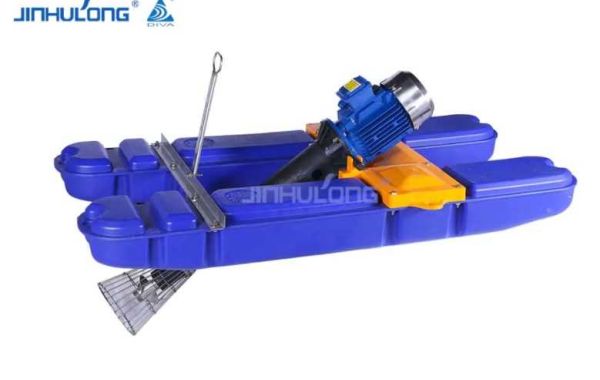In the realm of water management, the quest for efficient and effective aeration methods is an ongoing pursuit. The advent of the Deep Water Jet Aerator has introduced a paradigm shift in this domain, offering a range of advantages that set it apart from traditional aeration techniques. This article delves into the comparative benefits of using Deep Water Jet Aerators, highlighting their superiority in various aspects of water aeration.
One of the foremost advantages of Deep Water Jet Aerators is their ability to deliver oxygen deep into the water body. Unlike surface aeration methods, which are limited to the upper layers of water, Deep Water Jet Aerators are designed to inject oxygen at greater depths. This capability is crucial for maintaining the health of aquatic ecosystems, as it ensures that all levels of the water body receive the necessary oxygen for the survival and growth of aquatic organisms.
The efficiency of Deep Water Jet Aerators is another significant advantage. Traditional aeration methods often require large amounts of energy to operate, contributing to high operational costs and environmental impact. In contrast, Deep Water Jet Aerators are engineered to be energy-efficient, utilizing advanced technology to minimize energy consumption while maximizing oxygen transfer rates. This not only reduces the cost of operation but also aligns with the global push towards sustainable and eco-friendly practices.
The installation and maintenance of Deep Water Jet Aerators are also more straightforward compared to traditional methods. Traditional aeration systems often involve complex setups that require significant time and resources for installation. Deepwater Jet Aerators, on the other hand, are designed for ease of installation, reducing the time and labor required for setup. Additionally, their robust construction and minimal moving parts contribute to lower maintenance needs, further reducing the overall cost of ownership.
The versatility of Deep Water Jet Aerators is another notable advantage. They can be effectively used in a wide range of water bodies, from small ponds to large lakes and even industrial wastewater treatment facilities. This adaptability allows for the application of Deep Water Jet Aerators in various settings, addressing the diverse needs of different water management scenarios.
In terms of environmental impact, Deep Water Jet Aerators contribute to the reduction of greenhouse gas emissions. By using less energy, these devices help to lower the carbon footprint associated with water aeration. Moreover, the improved oxygenation of water bodies can lead to a decrease in the release of harmful gases, such as methane, which is often produced in oxygen-depleted conditions.
The use of Deep Water Jet Aerators also enhances the overall water quality. By promoting the growth of beneficial microorganisms and preventing the accumulation of harmful substances, these devices contribute to a healthier aquatic environment. This is particularly important in the context of water bodies that are prone to eutrophication, where excessive nutrients can lead to algal blooms and oxygen depletion.
Furthermore, Deep Water Jet Aerators can be integrated with other water management technologies, such as filtration systems and bio-remediation processes. This integration allows for a comprehensive approach to water treatment, ensuring that multiple aspects of water quality are addressed simultaneously.
In conclusion, the advantages of Deep Water Jet Aerators over traditional aeration methods are manifold. Their ability to deliver oxygen at greater depths, coupled with their energy efficiency, ease of installation, and versatility, make them a superior choice for modern water management. As the world continues to seek sustainable solutions to environmental challenges, the adoption of Deep Water Jet Aerators is a step in the right direction, offering a promising avenue for the enhancement of aquatic ecosystems and the overall health of our water bodies.








